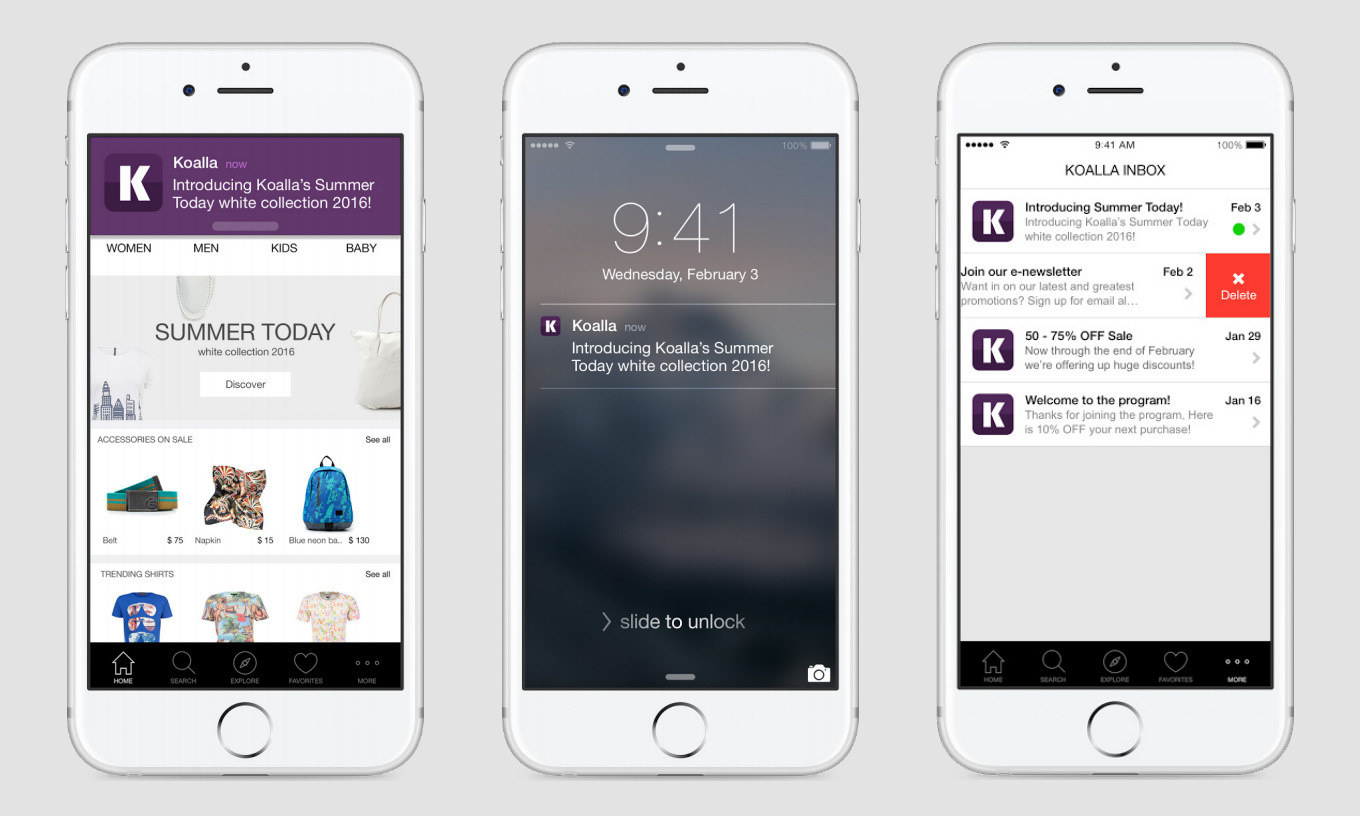We live in the age of the never-satisfied, always-mobile customer.
That is just one of the statements I can confidently make after ingesting thousands of pages of mobile marketing and consumer attitude research over the last few months. Consumers want more, cheaper, faster, and better. Even when you give them what they want, they’ll ask you for the next big thing tomorrow, but at half the price.
To keep pace with the world’s fastest-growing marketplace (that’s mobile, in case you missed the thread), marketers and developers need access to both up-to-date data and the most recent technologies. Today, SessionM has revealed the latest addition to its mobile marketing cloud — Inbox & Messaging — along with a slew of other announcements.
Inbox & Messaging is SessionM’s entry into the world of real-time, personalized push notifications and in-app messages. The service provides developers with an API, an SDK, and widgets for simple, quick integration, and the interface itself is both slick and easy-to-use for consumers receiving the messages.
In-app messages are important to mobile marketing because they don’t require a separate opt-in. This means you are able to reach the vast majority of your monthly active users whenever they open your app. Push notifications do require opt-in, of course, but consumers that allow them can also be drawn back into your app at just the right moment for your product or service.
Where Inbox & Messaging differs from similar services is in the provision of an always-available message center — similar to an email client for the mobile user — that provides your customers with the ability to see all unread messages in one place.
These in-app messages, push notifications, and inbox entries can either be triggered based on a predefined schedule or based on customer profile information. If your app user exhibits a particular behavior, Inbox & Messaging can start a relevant campaign to immerse that user in a particular flow or journey.
This is important, but it becomes especially interesting when you pair smartphone apps with brick-and-mortar retail locations. “Brick-and-mortar? I thought we were talking about always-mobile customers,” I hear you cry. Yes, because according to eMarketer, 68 percent of apparel and footwear shoppers still purchase in store. And other retail categories exhibit similar patterns of in-store research or purchase at varying levels.
Now factor in a recent study by SessionM — which took in data from 12,000 respondents — that showed 90 percent of consumers have a smartphone in hand while shopping at retail locations, using those devices for price comparisons, product information, and online reviews. If those statistics alone aren’t enough to whet your synchronized, mobile messaging whistle, consider this.
According to a 2015 study by IDC, consumers who shop online and in stores have a 30 percent higher lifetime value than those who buy using only one channel.
Of course, just because we can target in-store smartphone users doesn’t mean we should, and marketers have a responsibility to act responsibly. But I wondered about the crossroads between shoppers who walk around with a smartphone in their hand and in-app messaging that is effective, delivered at the right time, and not creepy?
“First of all, a universal preference center allows customers to weigh in on delivery method, frequency and such,” Bill Clifford, chief revenue officer at SessionM told me. “Done well, any notification leverages customer interactions with the brand historically with what the customer is doing right now.”
What is a good example of this type of interaction?
“If there’s data to the effect that a particular customer has liked Shamrock Shakes in the past, a push notification that they’re back for a limited time and the nearest location is four blocks away would most likely be welcomed by the customer,” Clifford said. “Similarly, if someone has been looking at a dress online and reading customer reviews of it, a notification that there are but a handful left in that size and color combination will likely be well received.”
Those interactions fit the bill for the always-mobile customer, but for the marketer, personalization isn’t just a case of installing a widget or using an API.
VB Insight’s research shows that 80 percent of consumer-facing companies just don’t understand their customers beyond basic demographics and purchase history. And 96 percent of marketers say that building a comprehensive single view of customers is a challenge. Does that surprise Clifford? And how do we solve this issue?
“No, this doesn’t surprise us at all,” Clifford said. “We talk to many marketers who have what we like to call ‘multiple single views of the customer’. Specifically, we talk to a lot of marketers who have historical customer data stored in one location and real-time data stored in another. The process of cleansing data, merging data, and creating segments is painfully manual and slow. The way to solve this is to create a dynamic, operational profile in the cloud that various systems can push data into and pull data from in real time.”
In addition to today’s product announcement, SessionM also revealed to me that it is expanding its operations and that the company has hit a significant milestone.
SessionM is moving outside of the U.S. for the first time, with 20-year mobile veteran Phillip Clement leading a new London office and serving as vice president of enterprise sales for Europe, Middle East, and Africa (EMEA). Clement has worked with organizations such as Vodafone, BT, and Cable & Wireless. Most recently, he worked with bemoko, where Clement led the mobile startup’s acquisition by SDL.
As well as opening a U.K. office, SessionM told me that it now has 500 million profiles under management within its mobile marketing cloud platform.
Inbox & Messaging is available today to SessionM customers using its Deliver module. In addition, it is available as a standalone solution. Pricing varies and is based on an annual subscription that takes into account the number of monthly active users and number of messages sent in a given month.
VentureBeat's mission is to be a digital town square for technical decision-makers to gain knowledge about transformative enterprise technology and transact. Learn More


